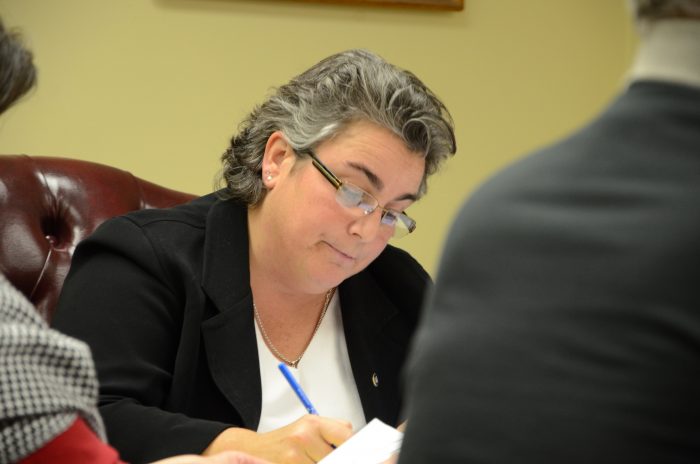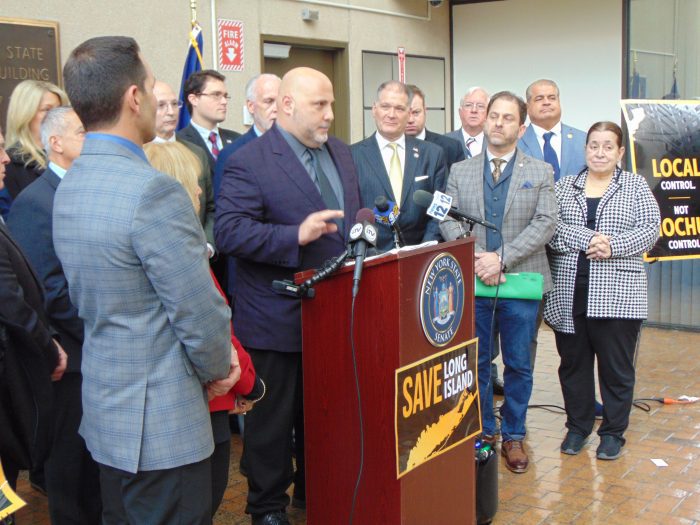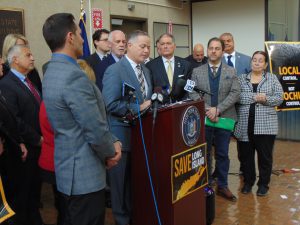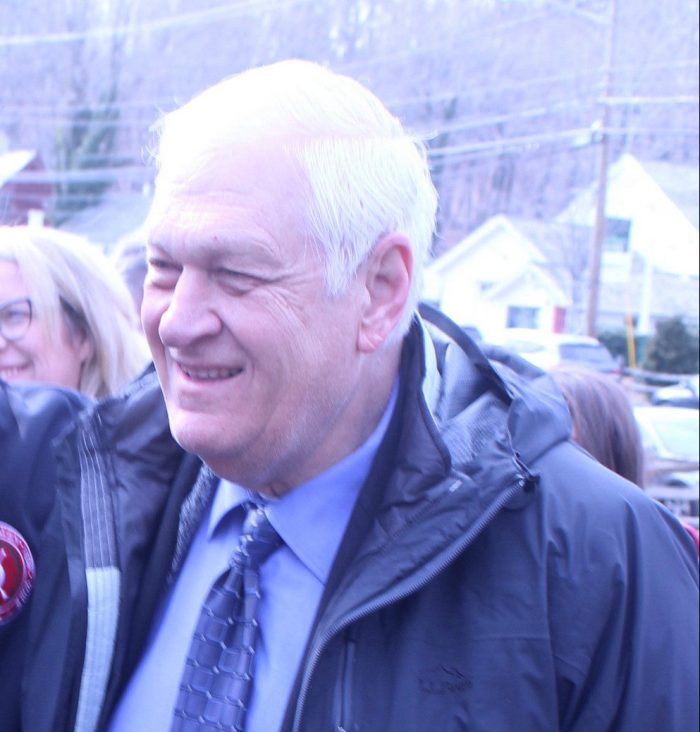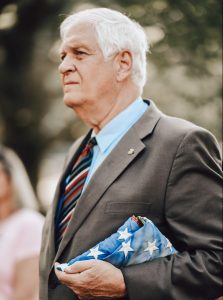As the number of people signing the Change.org petition against a Kings Park rail yard grows, the property owner said the plan would benefit Smithtown and Huntington.
In the last few weeks, residents of Kings Park and the surrounding areas, including Fort Salonga and Commack, have voiced their opposition to a proposed rail yard. More than 2,000 people have signed the Change.org petition titled “We Oppose Townline Rail Terminal.”
Townline Rail Terminal LLC, an affiliate of CarlsonCorp, owned by Toby Carlson with property on Meadow Glen Road in Kings Park, proposed to the Surface Transportation Board — an independent federal agency — a plan that asks for railroad tracks to be used for commercial use. The proposed rail spur construction would extend approximately 5,000 feet off the Long Island Rail Road Port Jefferson Branch line and be located near Pulaski and Town Line roads. Among the uses would be the disposal of incinerated ash and construction debris using diesel freight trains. Incinerated ash would be trucked between Covanta waste facility on Town Line Road in East Northport and the rail terminal.
Petitioners on Change.org have cited concerns about the rail spur being too close to where children play and homes; health risks associated with diesel exhaust and incinerated ash; diesel trains operating between 10 p.m. and 5 a.m.; the impact on the quality of life; noise and possible water pollution; negative impact on home values; and the lack of notice provided to residents about the project.
Representatives and members of the Commack Community Association, Fort Salonga Association and the revived Townline Association have also spoken out against the project at meetings, on social media and on the organizations’ websites.
The use of rail over trucking has received support from Town of Smithtown Supervisor Ed Wehrheim (R) and Suffolk County Legislator Rob Trotta (R-Fort Salonga).
Bob Semprini, Commack Community Association president, said in a phone interview that local elected officials have always been helpful based on his experiences in the past. In this case, he feels “it’s a poor decision on their part.” He said that elected officials and Carlson cite the closing of the Town of Brookhaven landfill in 2024 as the reason for opening the rail yard.
“The bottom line is this, they are selling a bill of goods to the community that if this does not happen, we’re all screwed — and this is not the case,” Semprini said.
He added that he has heard that while the Brookhaven landfill is scheduled to close in 2024, it may only close partially next year and there will still be the potential of sending ash to the town. A request for comment from the Town of Brookhaven to confirm was not answered by press time. He added local carting companies are working on plans to transport off Long Island, and if Covanta was open to it, one of those companies could transport the incinerator’s ash.
Semprini added that while Toby Carlson has said the rail spur would lessen the number of trucks on local roads, many feel if the project goes through, there will be more trucks.
He said the community and civic associations are ready to work against the proposal.
“We always have to fight for our quality of life in this town, and it’s absolutely ridiculous,” he said.
Carlson defends rail yard
In a telephone interview, Toby Carlson said the industrial area in Kings Park is ideal for such a rail yard as the businesses in the area historically have used construction materials such as gravel, stone, brick and cement, and also because Covanta produces ash.
The Northport resident said that 12,000 to 14,000 truckloads of material a year travel the roads to supply the area’s needs, and the rail terminal could potentially take “tens of thousands of trucks off the road.”
“Rail is the most efficient form of transportation,” Carlson said. “It’s the most environmentally-sound form of transportation, and to be able to consolidate all those loads that are coming in will take trucks off the road.”
He added that the rail spur would help when the Brookhaven landfill closes next year.
“At the end of the day, what we’re just trying to do is consolidate everything into a plan that makes sense,” Carlson said.
He said residents protesting the plan are not looking at the “longer-term picture of how our society has changed and how we’re all consumption based.”
He added that the only way to help fix the garbage problem is to make a concerted effort to reduce the materials we consume.
“We always want to push our solution somewhere else, into somebody else’s backyard, but I think regionally, locally, we need to solve our own solid waste issues,” he said, adding, “What about the hundreds of thousands of people that live out in Brookhaven that don’t want our stuff coming to them anymore?”
He said during the night, one train, which will run along the Port Jefferson line, will travel along the rail with approximately 20 to 27 cars.
“Materials will come in the night, we’ll drop that set of train cars off and that same train power unit will pick up 27 loaded cars, and take them out once per day, five days a week.”
He said the materials brought in are used locally and will stay in the Smithtown and Huntington areas.
“We are not supplying Babylon,” he said. “It’s really a regional solution for Smithtown and Huntington needs.”
Carlson said there would be an environmental review process, and if the proposal receives approval from the STB, it will still be a years-long process. Proposed buildings and site work would be subjected to Town of Smithtown approval.
As for residents’ concerns, he said some issues would be addressed with the rail grade closest to residents being 25 feet below the elevation of the existing Long Island Rail Road grade. There will also be a planted berm at least 15 feet high about the rail ground, an approximately 180 feet vegetative buffer. He is also open to sound walls, he said, “and other mitigation measures are on the table for discussion, depending on what scientifically gives the greatest amount of buffering and mitigative results.”
He is grateful for the support of Wehrheim and Trotta, who Carlson said, like others, are looking toward the future to figure out how to tackle the Brookhaven landfill closing.
The owner said he encourages everyone to send their concerns to STB and be curious about the proposal, as well as what’s happening with Long Island’s waste and how others feel about waste being shipped to their communities.
“They’re going to look at all those comments, all those concerns, all those things and they’re going to basically provide a solution to them, whether they decide for the project or against the project,” he said. “All those words have to be heard and they have to be addressed.”
According to the Town of Smithtown, “the STB will not issue a final decision until the public has an opportunity to comment on the proposal.” Residents can view the plan and all documents pertaining to it as well as letters of support and concerns on STB’s website under docket number FD 36575.


